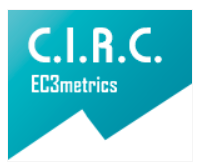Reliability and validity of the LI-SRT in Bogotá children 3 to 5 years old
Validez y confiabilidad de las listas li-srt en niños colombianos en edades de tres a cinco años
Main Article Content
List Ibero-Speech Recognition Threshold LI-SRT was created in response to the need to find the level of speech recognition at the performance of the Colombian population audiometric speech in 3 to 5 years old. The overall objective of this study was to find evidence of validity and reliability of the LI SRTColombian population in 3 to 5 years. During the study showed the need for adjustments to the visual and auditory stimuli according to the basic parameters for making a list audiometric speech (phonetic balance, familiarity and phonetic dissimilarity), thus redefining the 116 disyllabic y trisyllabic words, with severe and acute accentuation comprising this list and saw the construction and validation of visual support that includes these words with the participation of 39 judges: 10 experts and 29 children aged 3 to 5 layers of 1-6. The result was an agreement rate greater than 0.7 in children as well as judges audiologists on the stimuli presented. This study constitutes the first phase of validating the list of words that continues with the discovery of internal consistency to be applied to a group of children Bogotá.
Downloads
Publication Facts
Reviewer profiles N/A
Author statements
Indexed in
- Academic society
- Bogotá: Corporación Universitaria Iberoamericana
- Publisher
- Bogotá: Corporación Universitaria Iberoamericana
Article Details
Aiken, L. (1996). Test psicológicos y evaluaciones.México D.F., México: Octava Edición. Prentice Hall.
American Speech Hearing Asociation, 1998.
Berruecos, T & Rodriguez, J. (1967). Determination of the phonetic percent en the Spanish language spoken in Mexico City, and formation of P. B. lists of trochaic words.
Carvajal, G., Charry, M., & Salguero, M. (1984). Estudio Audiolingüístico en la elaboración de una lista de palabras fonéticamente balanceadas para la logoaudiometría en Colombia. Tesis sin editar. Universidad Nacional de Colombia.
Cohen, R. & Swerdilk, M. (2001). Pruebas y evaluaciones psicológicas. México D. f., México: McGraw Hill.
Cuéllar, J., Prieto, L., Aragón, M., Arbelaez, A. & Maury, D. (2005). Confiabilidad del LISRT aplicado a niños Bogotanos de 3 a 5 años. Investigación Institucional. Corporación Universitaria Iberoamericana, Bogotá, D. C., Colombia.
Ewing IR, Ewing AWG. (1994). The ascertainment of deafness in infancy and early childhood. J Laryngol Otol 59: 309-388.
Fulton, R., Lloyd, L. (1979). Evaluación Audiológica en personas difíciles de examinar. Mayorga: Salvat Editores.
Fulton R. T. & Spradlin J. E. (1971). Operant audiometry with severely retarded children Published in International Journal of Audiology, Volume 10, Issue 4, pages 203-211.
Gallego, C. y Sánchez, M. (1992). Audiología Visión de Hoy. Manizales, Colombia: Imprenta Corporación Católica de Manizales.
García, L., Gómez, J., Kamel, M., Martínez, M., & Navarro, M. (1994). Validación de la lista de palabras fonéticamente balanceadas elaborada por Carvajal, Charry y Salguero, para la población Bogotana de 14 a 35 años. Tesis de grado no publicada, Corporación Universitaria Iberoamericana, Bogotá, D. C., Colombia.
Hallpike, D. (1947). The peep - show: a new technique for pure tone audiometry in young children. Br Med J 1947; 24: 719-722.
Katz, J. (2002). Handbook of clinical Audiology. Fifth Edition. New Cork: Williams & Wilkins.
Katz, J. (1994). Handbook of Clinical Audiology. Fourth Edition. New Cork: Williams & Wilkins.
Messick, S. (1995). Standards of validity and the validity of standards in performance assessment. En: Educational measurement: Issues and Practice, No. 14, pp. 5-8.
Muñiz, J. (1998). Teoría Clásica de los Test. Ed Pirámide. Madrid, España.
Muñiz, J. (2003). Teoría básica de los test. Ediciones Pirámide. Madrid, España.
Navarro, T. (1946). Fonología Española. Stracose. NT.
Nunnally, JC. (1991). Teoría Psicométrica. México. Trillas.
Oramas, C., Rodríguez, W., Acosta, M., Arellana, A,.Casas, A., Núñez, M., et al. (1997). Prueba de Logoaudiometría adaptada al español colombiano para la población infantil de Santafé de Bogotá de 3 a 5 años de edad basado en
la prueba de NUCHIPS: estimulación de validez y confiabilidad. Universidad Iberoamericana prueba logoaudiometrica infantil (UIPLI).Informe de investigación institucional, Corporación Universitaria Iberoamericana,Bogotá, D. C.
Oramas, C., Rodríguez, W., Cano, C., López, L., Manrique, M., Medina, N., et al. (1997). Validez de contenido de las listas IBERO para determinar el SRT en niños con colombianos
de 3 a 5 años de edad (LI-SRT). Informe de investigación institucional, Corporación Universitaria Iberoamericana, Bogotá, D. C.84
Oramas, C. (1996). Audiología Básica. Conferencia presencia presentada ante la Especialización en Audiología. Corporación Universitaria Iberoamericana.
Portmann, M. & Portmann, C. (1975). Audiometría Clínica. Barcelona, España: Toray-Masson.
Quiros, J. & D´Elia, N. (1980). La audiometría del adulto y del niño. Buenos Aires, Argentina:Paidós.
Rivas, J y Ariza H. (1992). Otología Imprenta. Fuerzas Militares de Colombia, Bogotá.
Salesa, E. Perelló, E. & Bonavida, A. (2005). Tratado de Audiología Elsevier. España
Stach, B. (1998). Clinical Audiology. San Diego, California: Singular Publishing Group Inc.
Tato, J., Lorente, Sanjurjo, F., y Bello, J. (1948). Características acústicas de nuestro idioma. Otorrinolaringología.












